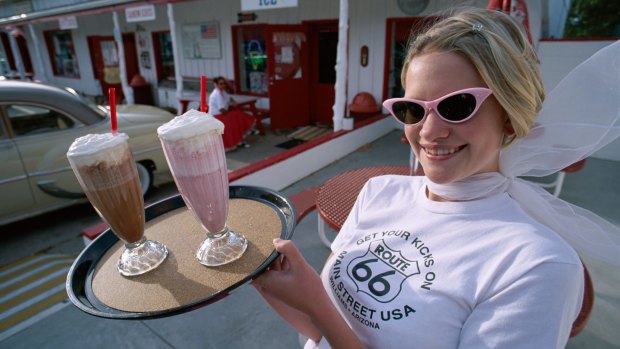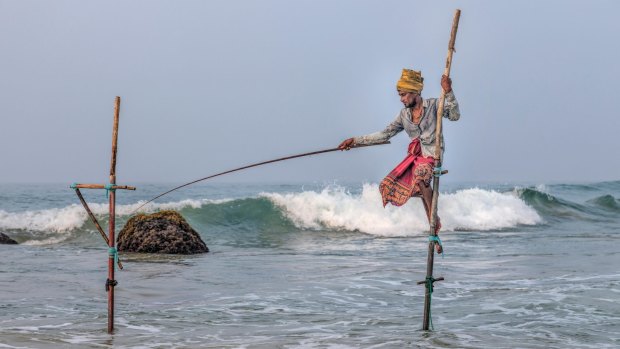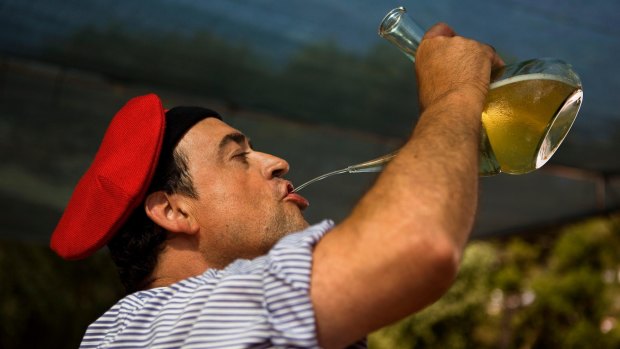This was published 5 years ago
Seven unique practices in the world that are dying out: See them before they are gone forever
By Ben Groundwater

It's well worth seeking out a traditional US diner if you ever get the chance.Credit: Alamy
Here's a sobering statistic: 90 per cent of all the world's languages will disappear within the next 100 years.
That's something like 6000 languages that just won't exist by 2119, according to the UN's Department of Economic and Social Affairs. The world is changing rapidly: globalisation and modernisation are shrinking continents, destroying borders; cultures are amalgamating, traditions and practices and even entire languages are disappearing as they become no longer necessary.
Travellers see this every day. You so often witness demonstrations of rites and traditions that have almost become extinct, that are being shown to tourists not just for pride and for education, but to ensure they still exist, to have a reason for older practitioners to teach young people and keep these traditions alive.
Travellers are actually doing their bit by going along and seeing these demonstrations and listening to them and even buying the products they produce. But even still, they might not be around forever.
Real soy sauce in Japan
This is an interesting one. Soy sauce in Japan is traditionally fermented and aged in wooden barrels, huge cedar tubs known as "kioke", which can be used and reused for up to 100 years. That's such an amazingly long time that the craft of making the kioke is dying out due to lack of demand – as industrial soy sauce makers have switched to steel or concrete barrels, many traditional artisans say they can no longer replace their old wooden kioke, because there's no one left to make them.
That seems odd to me, because I've heard this same story from so many soy sauce makers; obviously there is some demand, if only small. But still, there's no supply. If you want to see soy sauce being made the traditional way, and taste the difference, try Shodoshima, an island near Kobe, where its famous soy sauce is still fermented in kioke.
Stilt fishing in Sri Lanka

Credit: Alamy
Plenty of tourists come home from Sri Lanka with photos of local fishermen sitting or standing on long poles that are anchored to the bottom of the ocean; however, the bulk of those locals aren't actually fishermen – they're essentially buskers. They're posing on the poles for photos, and then collecting money for the privilege.
There are several reasons why the poles aren't used by fishermen any more: there aren't as many fish as there used to be; many of the best fishing spots were wiped out in the 2004 tsunami; the poles can't be used during the dangerous monsoon season; and there's far more money to be made farming, or in posing for photos, than there is yanking fish out of the ocean. There are still a few genuine stilt fishermen out there in Sri Lanka – but you'll do well to find them.
The porron in Catalonia

Credit: Alamy
Porrons are fun. They're Catalan drinking vessels, glass jugs with tapered, narrow spouts from which you tip wine in a glorious arc straight into your mouth. There's a knack to this that only the Catalans in northern Spain seem to possess: to drink properly and expertly from the porron you need to open just a tiny part of your mouth and yet still tip a stream of red wine into there from a great height, and then end that stream without dribbling vino down your chin.
Porrons used to be utilised frequently in Catalonia; however, the traditional jugs these days only appear on the table at special celebrations, and there are fewer and fewer makers of the glass vessels. Still, get along to the right event and you'll be able to give one a try. Just, wear old clothes.
Panama hats in Ecuador

Credit: Alamy
Here's the first thing to know: Panama hats are not made in Panama. Traditionally, they're made in Ecuador, and they're done best by weavers in the town of Montecristi. Only a few generations ago there were more than 2000 weavers making these iconic hats; these days there are fewer than 200, and the master weavers are all in their 70s and 80s.
The problem is that each genuine hat in Montecristi is handmade, takes at least two months to make, and costs a lot of money to buy. These true Panama hats have been supplanted by far cheaper, mass-produced versions made in Asia – the Ecuadorian masters can't compete. It's still possible to visit Montecristi and buy a locally made hat. But it won't be forever.
Kim Hoang paintings in Vietnam
Here's a good news story. Kim Hoang paintings were a style of Vietnamese woodblock print unique to a small village near Hanoi, and up until very recently they had disappeared. There was no demand. No one new was learning the skill. It was gone.
However, tourists suddenly began showing interest in the paintings again – they wanted them, in particular, to celebrate the Chinese year of the pig, because the paintings are red (which is lucky) and often depict pigs. And so Vietnamese art collector Nguyen Thi Thu Hoa sought out some of the few original Kim Hoang woodblocks still being kept in museums, and almost single-handedly revived the art form in the same old village. Tourists can now visit and buy a painting. Nice one.
Diners in the USA
Would you call a huge plate of eggs, bacon, fried potatoes, and biscuits and gravy served with a bottomless cup of filter coffee a work of art? I would. Particularly if it's served in a traditional American diner, one of those old roadside joints with the 1950s vibe, the friendly service, the no-frills food and the cheap price tag.
Diners used to be everywhere in the US – a proper institution. These days, however, they're beginning to disappear, these independent restaurants unable to compete with fast-food chains and modern coffee shops. That's a damn shame, and it's well worth seeking out a traditional US diner if you ever get the chance. I'd recommend baggy pants.
Aboriginal languages in Australia
Speaking of languages disappearing – there were once more than 300 distinct Aboriginal languages in Australia. Many are already extinct; there are thought to be fewer than 100 remaining, and plenty of those are either highly or critically endangered.
If you want to hear our country's original languages spoken, you'll have to head out to the Northern Territory or Western Australia, where the bulk of native language speakers still exist: there you're most likely to hear a dialect of the Yolgnu language, of which there are more than 8000 speakers.
Which dying art forms have you witnessed on your travels? Are there any that don't exist any more? Can tourism save these traditions?
Sign up for the Traveller Deals newsletter
Get exclusive travel deals delivered straight to your inbox. Sign up now.